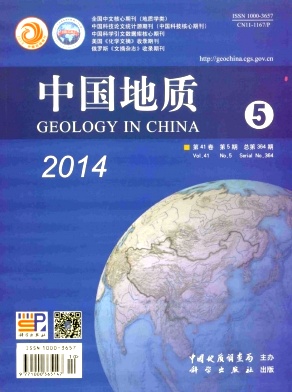YAO Xiao-feng1, 2, YE Tian-zhu1, TANG Jv-xing3, ZHENG Wen-bao3, DING Shuai4, LI Yong-sheng1, ZHENG Shi-min1. The effect of Si-Ca interface on skarn formation and pollymetallic mineralization in the Jiama deposit, Tibet[J]. Geology in China, 2014, 41(5): 1577-1593.
| Citation: |
YAO Xiao-feng1, 2, YE Tian-zhu1, TANG Jv-xing3, ZHENG Wen-bao3, DING Shuai4, LI Yong-sheng1, ZHENG Shi-min1. The effect of Si-Ca interface on skarn formation and pollymetallic mineralization in the Jiama deposit, Tibet[J]. Geology in China, 2014, 41(5): 1577-1593.
|
The effect of Si-Ca interface on skarn formation and pollymetallic mineralization in the Jiama deposit, Tibet
-
1. Development Research Center, China Geological Survey, Beijing 100037, China; 2. China University of Geosciences, Beijing 100083, China; 3. Key Laboratory of Metallogeny and Mineral Assessment of Ministry of Land and Resources, Institute of Mineral Resources, Chinese Academy of Geological Sciences, Beijing 100037, China; 4. Chengdu University of Technology, Chengdu 610059, Sichuan, China
-
Abstract
Abstract: The Jiama deposit is a superlarge copper-polymetallic deposit inGangdise metallogenic belt in Tibet, and its main skarn type orebody is distributed along the interface between Early Cretaceous Linbuzong Formation hornfels (salic) and Late Jurassic Duodigou Formation marble (calc). Based on the zonation of skarn between the Si-Ca interface, the authors studied petrological geochemistry and mineral chemistry of skarns in different zones, with the purpose of studying the effect of Si-Ca interface on the formation of skarn and orebody. It is shown that the values of SiO2 and CaO increase and the values of Al2O3 and TFe decrease downwards from garnet skarn through garnet wollastonite skarn to wollastonite skarn along the interface belt. The rare and trace elements geochemical characteristics of garnet skarn and wollastonite skarn are restricted by hornfels and marble respectively. Garnets within skarn near the roof of the Si-Ca interface are transition series between grossular and allochroite, in which values of Al decrease and values of Fe increase from core outwards, while garnets within skarn near the bottom of the interface have more Fe values and less Al content than the former garnet series, in which values of Al and Fe change a bit from core outwards. Skarns are hydrothermal reaction products through alteration of salic and calc rocks. Fluid decompression boiling and groundwater mixing along the Si-Ca interface and vertical fluid geochemical barrier along the interface belt seem to have been the main factors influencing orebody formation in the Jiama deposit. The difference of chemistry and physical characteristics between salic and calc rocks had important effect on the ore-forming process along Si-Ca interface. The interface overlap extension structure and magmatic thermal event that increased permeability from roof to bottom along the interface belt contributed to the scale increase and grade enrichment of the orebody.
-

-
-
Access History







 DownLoad:
DownLoad: